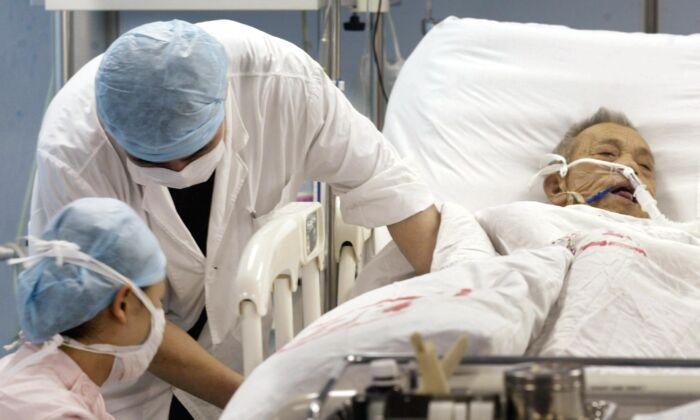Hong Kong and Taiwan are on high alert following a notice from Chinese authorities that 27 people contracted an “unknown viral pneumonia” in the central city of Wuhan.
With some netizens likening the outbreak to the deadly severe acute respiratory syndrome (SARS) epidemic that killed almost 800 people in 2002-2003 after being covered up by Chinese authorities, the Hong Kong and Taiwan government have called for faster medical testing after Chinese authorities said they were yet to confirm the cause of the outbreak.
Emergency Notice for New Outbreak
On Dec. 30, Wuhan city Health Commission released an “Emergency Notice About Unknown Pneumonia.” The notice said that several Wuhan hospitals had received pneumonia patients with similar symptoms and that no further details were available.The notice was soon spread by Chinese netizens via different social media platforms. Although the government soon censored this information, the notice was broadly spread among overseas Chinese communities.
On Dec. 31, state-run media confirmed the outbreak but also did not have any information about the cause of the infections.
The report said patients’ symptoms included fever, having difficulty breathing and invasive lesions in both lungs. 27 people from Wuhan had fallen ill, with seven of them in serious condition.
Most of the patients were sellers at the Huanan Seafood Market located close to Hankou Railway Station in the city’s Jianghan district. That same market was linked to all SARS cases seen in Wuhan in 2003. The market is not limited to selling seafood, netizens said, but also sees various animals including cats, snakes, and marmots.
The notice added that hospitals were planning to release two of the 27 infected people in the next few days after some more treatment, while 18 other patients are in a stable condition.
The state-run People’s Daily reported on the afternoon of Dec. 31 that the initial investigating team didn’t find an obvious human-to-human transmission, and that so far, no medical staff have been infected.
“The cause of the disease is not clear,” the newspaper said on the popular social media platform Weibo, citing unnamed hospital officials. “We cannot confirm it is what’s being spread online, that it is SARS virus. Other severe pneumonia is more likely.”
The Chinese National Health Commission, a cabinet-level executive department for sanitation and health, said it has sent a group of experts to Wuhan on Dec. 31 to lead more tests and another investigation.
Hong Kong
Every day, there are four trains that run between Hong Kong and Wuhan. As a result, the presence of the disease in Wuhan has Hongkongers worried.Hui pointed out that in 2003, one out of four SARS patients was in serious condition. He said mainland authorities should arrange virus tests as soon as possible. Meanwhile, people should wear a facial mask and wash their hands frequently if they plan to go to Wuhan, he added.
Yuen Kwok-yung, microbiology professor at Hong Kong University, tried to calm down the public after acknowledging that the outbreak had similarities to the 1997 outbreak of bird flu and the 2003 outbreak of SARS.
Taiwan
Fears about the disease has been a topic of great concern in Taiwan. People are worried that with the Chinese New Year holiday on Jan. 25, there is a heightened risk that the virus may be spread by Taiwanese businessmen returning from China.Lo said that once the Wuhan side has confirmed the type of virus, the Taiwanese government will set up an emergency working team to coordinate departments reacting to possible infections.
Since the first SARS epidemic, no additional cases of the virus have been reported so far worldwide.
The virus was first discovered in China’s Guangdong province in 2002, after which it spread to Hong Kong and other cities. At least 1,755 Hongkongers became infected with the SARS virus, of which 299 died. In neighboring Taiwan, 307 people contracted the virus, of which 47 died.
Globally, a total of 8,096 people from 31 countries contracted SARS, including Singapore, the United States, the United Kingdom, Germany, Australia, and the Philippines.
There is currently no cure for SARS.





